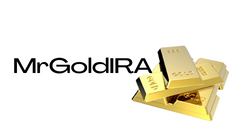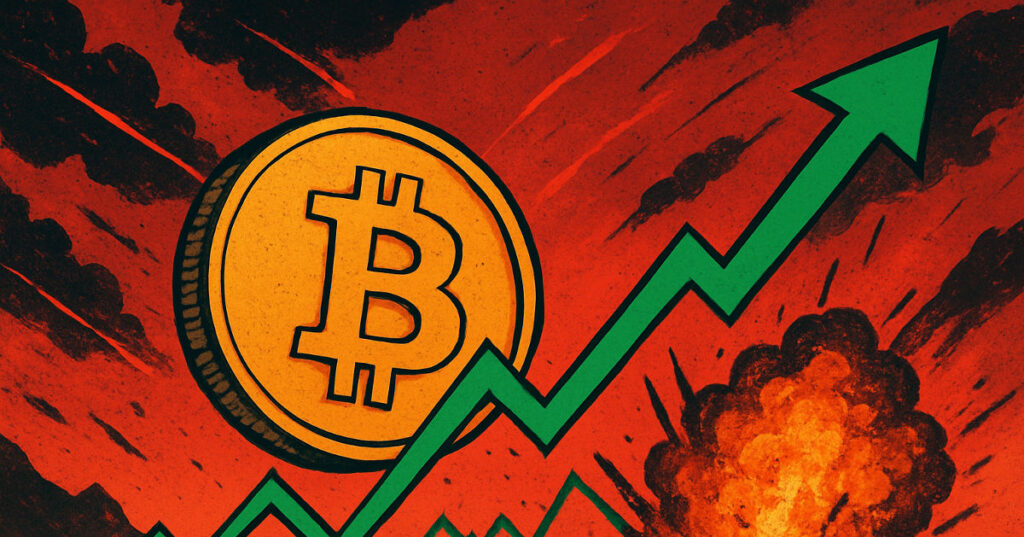
Hey there, crypto enthusiasts! The past few days have been quite a rollercoaster for the crypto world, wouldn't you agree?
Despite the turmoil, Bitcoin holders are smiling as the Bitcoin price surged back up to approximately $116,000 today after a tumultuous weekend that left the broader crypto market reeling.
Navigating from Bitcoin Price Panic to Recovery
Picture this: Bitcoin's price took a nosedive to the low $100,000s on Friday due to escalating trade tensions between the U.S. and China. The global markets were in a frenzy after President Donald Trump announced hefty tariffs on Chinese goods, countered by Beijing's export controls set to kick in on Nov. 1.
Market Sentiment Shift
However, over the weekend, the storm settled, and Bitcoin's price started its upward journey. President Trump's reassuring words that 'it will all be fine' regarding the trade tensions played a significant role in calming the market nerves.
Institutional Support
What fueled this resurgence was not just market dynamics but also significant institutional and corporate activity. Strategy's recent purchase of 220 BTC worth $27.2 million, funded through share offerings, added a layer of confidence among investors reeling from Friday's market dip.
Now, in the eyes of technical analysts, a bitcoin price of $105,000 holds as a critical short-term support level, while bulls aim to reclaim control at $118,000. Despite some caution in the air and bearish oscillators, the broader sentiment is gradually turning optimistic.
Bitcoin's Rising Profile in Corporate and Institutional Circles
Shifting Market Dynamics
Beyond the day-to-day price fluctuations, Bitcoin's resilience underscores its growing acceptance within corporate treasuries and institutional investors. The influx of funds into U.S. spot Bitcoin ETFs, notably BlackRock's IBIT ETF managing over 800,000 BTC valued at $97 billion, signifies a changing tide.
Market Predictions and Future Outlook
Looking ahead, with the next Bitcoin halving on the horizon in April 2026 and prevailing volatile macroeconomic conditions, analysts foresee more turbulence. Nevertheless, the narrative remains intact: limited supply, surging institutional interest, and a strengthening position as a treasury asset.
As of the latest update, Bitcoin is holding steady around $116,050, marking a notable 9% rise from its recent lows. Exciting times in the crypto sphere, right?
So, what are your thoughts on Bitcoin's resilience amidst market chaos? Share your insights and let's continue unraveling the exciting world of cryptocurrencies together!
Frequently Asked Questions
How is gold taxed within an IRA?
The tax on the sale of gold is based on its fair market value when sold. You don't have tax to pay when you buy or sell gold. It is not income. If you sell it later, you'll have a taxable gain if the price goes up.
You can use gold as collateral to secure loans. Lenders try to maximize the return on loans that you take against your assets. Selling gold is usually the best option. It's not guaranteed that the lender will do it. They might keep it. Or, they may decide to resell the item themselves. You lose potential profits in either case.
If you plan on using your gold as collateral, then you shouldn't lend against it. If you don't plan to use it as collateral, it is better to let it be.
How Does Gold Perform as an Investment?
The supply and the demand for gold determine how much gold is worth. Interest rates are also a factor.
Due to limited supplies, gold prices are subject to volatility. Additionally, physical gold can be volatile because it must be stored somewhere.
What is the value of a gold IRA
A gold IRA has many benefits. You can diversify your portfolio with this investment vehicle. You have control over how much money goes into each account.
You have the option of rolling over funds from other retirement account into a gold IRA. This allows you to easily transition if your retirement is early.
The best thing about investing in gold IRAs is that you don’t need any special skills. They are readily available at most banks and brokerages. Withdrawals can happen automatically, without any fees or penalties.
However, there are still some drawbacks. Gold has historically been volatile. Understanding why you want to invest in gold is essential. Is it for growth or safety? Is it for insurance purposes or a long-term strategy? Only after you have this information will you make an informed decision.
If you plan to keep your gold IRA indefinitely, you'll probably want to consider buying more than one ounce of gold. A single ounce isn't enough to cover all of your needs. You could need several ounces depending on what you plan to do with your gold.
If you're planning to sell off your gold, you don't necessarily need a large amount. You can even manage with one ounce. You won't be capable of buying anything else with these funds.
Can the government take your gold
Your gold is yours and the government cannot take it. You worked hard to earn it. It belongs entirely to you. This rule may not apply to all cases. Your gold could be taken away if your crime was fraud against federal government. You can also lose precious metals if you owe taxes. You can keep your gold even if your taxes are not paid.
What does a gold IRA look like?
The Gold Ira Accounts are tax-free investment options for those who want to make investments in precious metals.
You can purchase physical bullion gold coins at any point in time. You don't have to wait until retirement to start investing in gold.
Owning gold as an IRA has the advantage of allowing you to keep it forever. Your gold holdings will not be subject to tax when you are gone.
Your heirs can inherit your gold and avoid capital gains taxes. And because your gold remains outside of the estate, you aren't required to include it in your final estate report.
To open a gold IRA, you will first need to create an individual retirement account (IRA). After you do this, you will be granted an IRA custodian. This company acts in the role of a middleman between your IRS agent and you.
Your gold IRA custody will take care of the paperwork and send the forms to IRS. This includes filing annual reporting.
After you have created your gold IRA, the only thing you need to do is purchase gold bullion. The minimum deposit is $1,000. You'll get a higher rate of interest if you deposit more.
Taxes will apply to gold that you take out of an IRA. You'll have to pay income taxes and a 10% penalty if you withdraw the entire amount.
You may not be required to pay taxes if you take out only a small amount. However, there are some exceptions. There are some exceptions. For instance, if you take out 30% or more from your total IRA assets, federal income taxes will apply plus a 20 percent penalty.
It's best not to take out more 50% of your total IRA investments each year. A violation of this rule can lead to severe financial consequences.
Is buying gold a good way to save money for retirement?
Although gold investment may not seem appealing at first glance due to the high average global gold consumption, it's worth considering.
Physical bullion is the most popular method of investing in gold. But there are many other options for investing in gold. It's best to thoroughly research all options before you make a decision.
If you're not looking to secure your wealth, it may be worth considering purchasing shares in mining equipment or companies that extract gold. Owning gold stocks should work well if you need cash flow from your investment.
You also can put your money into exchange-traded funds (ETFs), which essentially give you exposure to the price of gold by holding gold-related securities instead of actual gold. These ETFs usually include stocks of precious metals refiners or gold miners.
What should I pay into my Roth IRA
Roth IRAs allow you to deposit your money tax-free. You cannot withdraw funds from these accounts until you reach 59 1/2. There are some rules that you need to keep in mind if you want to withdraw funds from these accounts before you reach 59 1/2. You cannot touch your principal (the amount you originally deposited). This means that regardless of how much you contribute to an account, you cannot take out any more than you initially contributed. If you decide to withdraw more money than what you contributed initially, you will need to pay taxes.
You cannot withhold your earnings from income taxes. Also, taxes will be due on any earnings you take. Consider, for instance, that you contribute $5,000 per year to your Roth IRA. Let's also say that you earn $10,000 per annum after contributing. Federal income taxes would apply to the earnings. You would be responsible for $3500 That leaves you with only $6,500 left. The amount you can withdraw is limited to the original contribution.
You would still owe tax on $1,500 if you took out $4,000 of your earnings. You would also lose half of your earnings because they are subject to another 50% tax (half off 40%). Even though you had $7,000 in your Roth IRA account, you only received $4,000.
Two types of Roth IRAs are available: Roth and traditional. Traditional IRAs allow for pre-tax deductions from your taxable earnings. When you retire, you can use your traditional IRA to withdraw your contribution balance plus interest. A traditional IRA can be withdrawn up to the maximum amount allowed.
Roth IRAs do not allow you to deduct your contributions. You can withdraw your entire contribution, plus accrued interests, after you retire. There is no minimum withdrawal required, unlike a traditional IRA. You don't need to wait until your 70 1/2 year old age before you can withdraw your contribution.
Statistics
- If you accidentally make an improper transaction, the IRS will disallow it and count it as a withdrawal, so you would owe income tax on the item's value and, if you are younger than 59 ½, an additional 10% early withdrawal penalty. (forbes.com)
- Contribution limits$6,000 (49 and under) $7,000 (50 and up)$6,000 (49 and under) $7,000 (50 and up)$58,000 or 25% of your annual compensation (whichever is smaller) (lendedu.com)
- The price of gold jumped 131 percent from late 2007 to September 2011, when it hit a high of $1,921 an ounce, according to the World Gold Council. (aarp.org)
- If you take distributions before hitting 59.5, you'll owe a 10% penalty on the amount withdrawn. (lendedu.com)
- This is a 15% margin that has shown no stable direction of growth but fluctuates seemingly at random. (smartasset.com)
External Links
irs.gov
finance.yahoo.com
cftc.gov
wsj.com
- Saddam Hussein's InvasionHelped Uncage a Bear In 1991 – WSJ
- How do you keep your IRA Gold at Home? It's Not Exactly Legal – WSJ
How To
A growing trend: Gold IRAs
The gold IRA trend is growing as investors seek ways to diversify their portfolios while protecting against inflation and other risks.
Gold IRA owners can now invest in physical gold bullion or bars. It can be used for tax-free growth and provides an alternative investment option for those concerned about stocks and bonds.
A gold IRA allows investors the freedom to manage their wealth without worrying about volatility in the markets. Investors can use the gold IRA for protection against inflation and potential problems.
Investors also benefit from physical gold's unique properties, such as durability and portability.
Additionally, the gold IRA has many benefits. It allows you to quickly transfer your gold ownership to your heirs. The IRS doesn't consider gold a commodity or currency.
All this means that the gold IRA is becoming increasingly popular among investors seeking a haven during financial uncertainty.
—————————————————————————————————————————————————————————————-
By: Micah Zimmerman
Title: The Resilience of Bitcoin: Reaching $116,000 Amidst Crypto Market Volatility
Sourced From: bitcoinmagazine.com/markets/bitcoin-price-surges-back-to-116000
Published Date: Mon, 13 Oct 2025 20:55:14 +0000



















